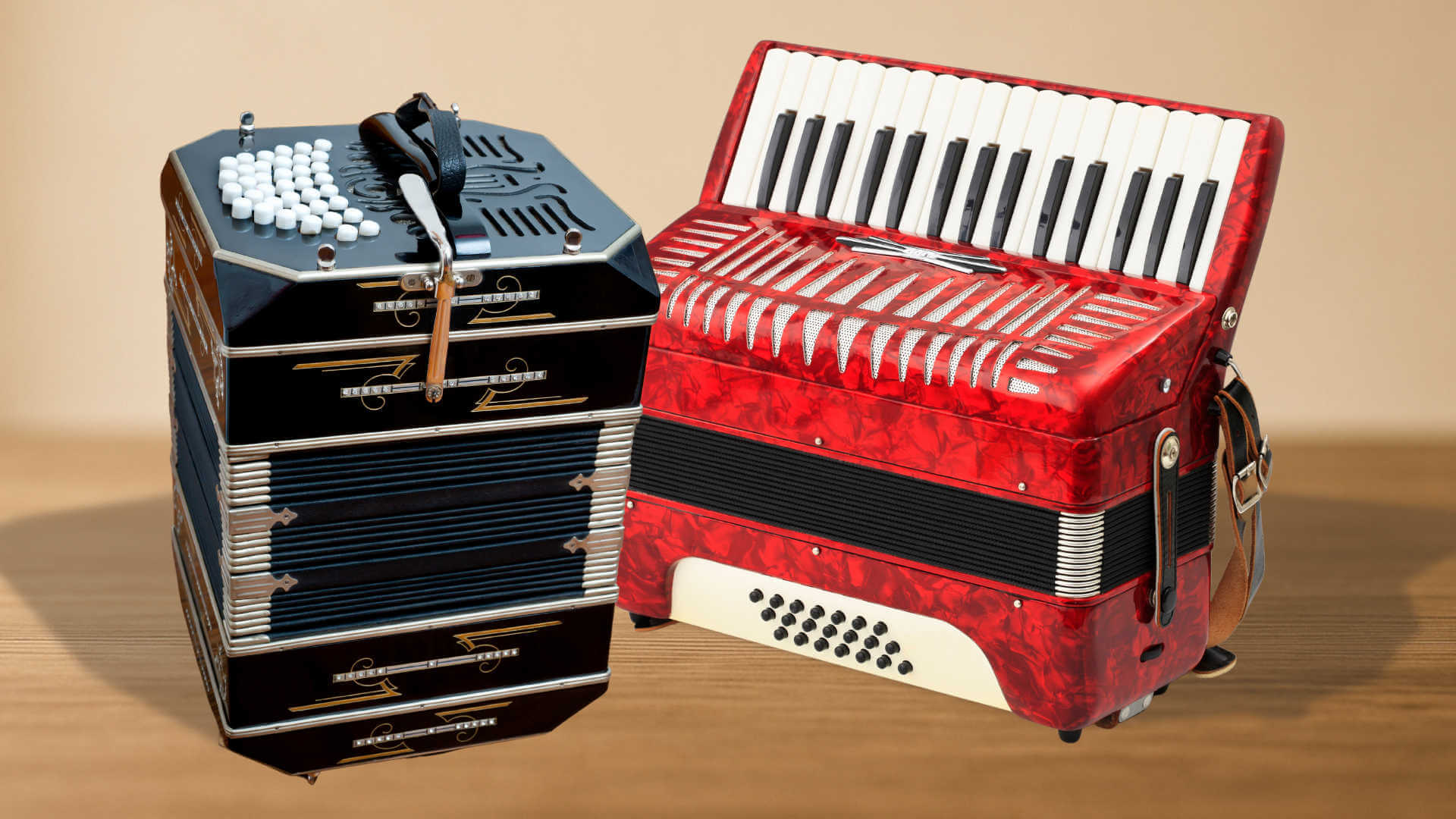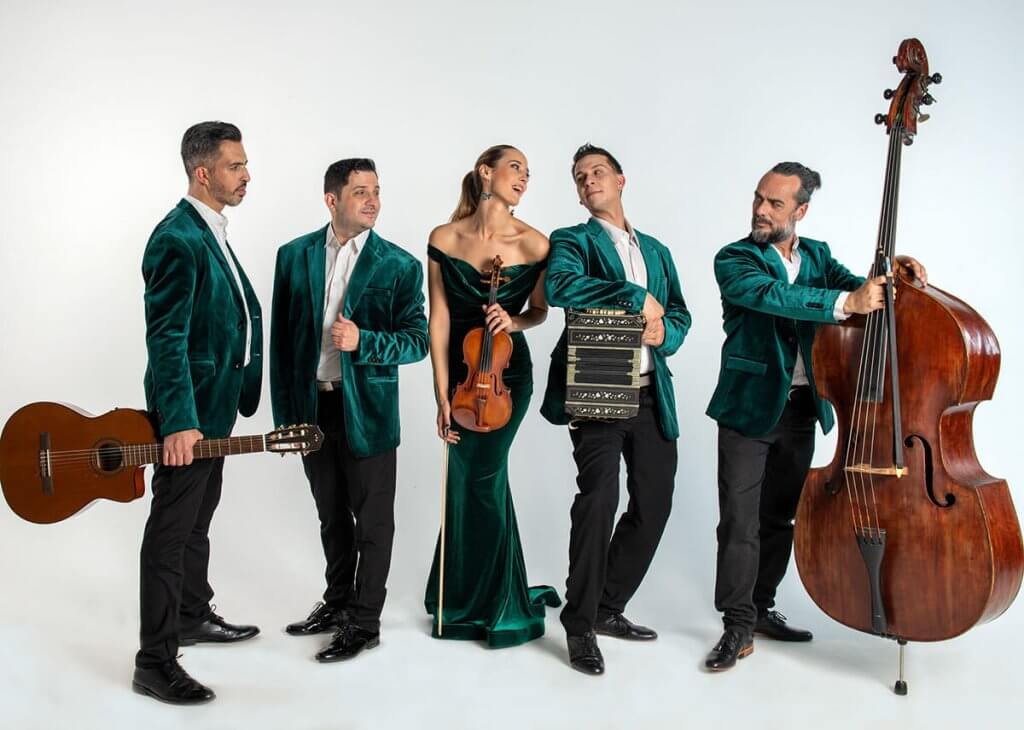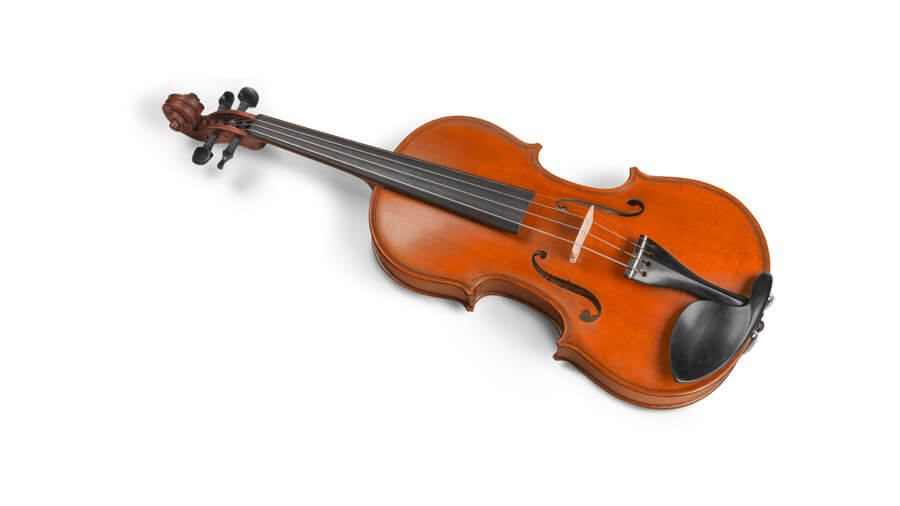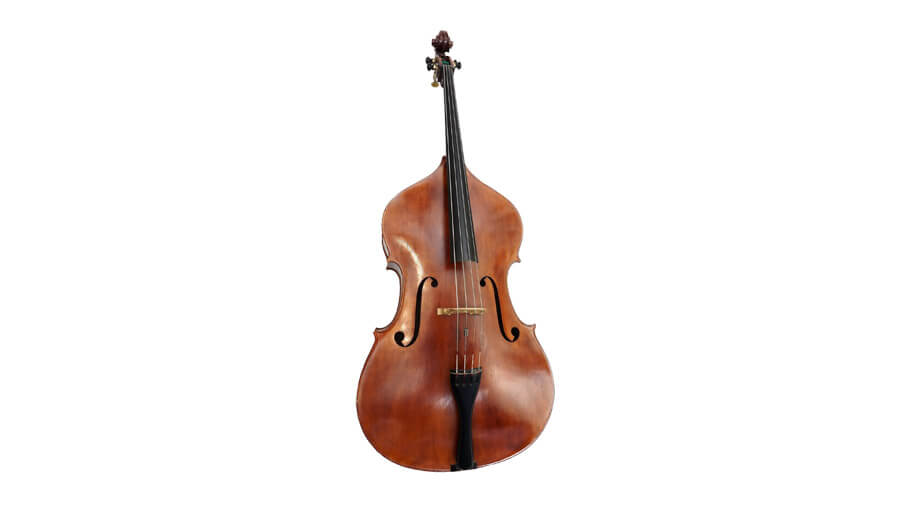Tango Instruments: Typical Instrumentation and Roles
This guide explains the typical tango instruments — the main instruments in tango music — and the job of each one. Expect short, clear notes on sound, roles, and how the instruments work together on the dance floor.
The bandoneon, which defines the tango sound, gets special focus.
What Are the Typical Tango Instruments?
In a traditional orquesta típica you’ll almost always find this typical tango lineup:
- Bandoneon (bandoneón)
- Violins
- Piano
- Double Bass
This combination is “typical” because it balances lead color and phrasing (bandoneon, violins), harmonic drive and rhythmic patterns (piano), and a steady bass pulse (double bass).
This mix gives tango a breath-like feel and a clear, danceable groove without drums.
What Each Instrument Does
Here’s what each part does in a typical tango ensemble — sound, role, and what dancers feel on the floor.
Bandoneon — Lead Color & Phrasing
The bandoneon (bandoneón) shapes the main line and the mood. With the bellows, players breathe into phrases, slide into notes, and add off-beat accents that create tension and release.
These techniques are rooted in the instrument’s mechanics and are central to why it defines the tango sound. It gives the tango orchestra a clear voice and guides dancers through the phrasing.
Violins — Melody & Drama
Violins carry the soaring melody and add drama with unison lines, harmonies, tremolo, and slides.
They brighten the texture and amplify emotions without overpowering the rhythm section. Benefit: they keep the tune clear on a busy dance floor.
Piano — Harmony & Drive
The piano is the engine: left hand anchors patterns and bass figures; right hand supplies chords, riffs, and rhythmic hits.
It locks melody and bass together and pushes time forward. Benefit: steady, danceable groove without a drum kit.
Double Bass — Pulse & Foundation
The double bass lays down the heartbeat with short, articulated notes and clear pitch.
It adds weight to every step and keeps the ensemble honest about tempo and feel. Benefit: a grounded pulse that dancers can trust.
Additional Tango Instruments (when they’re used)
These are optional instruments musicians add when the room calls for them. They refresh the texture and space in the mix but never replace the core four tango orchestra instruments.
- Guitar — The guitar is used for an intimate groove, with short syncopated strums or warm arpeggios that outline the harmony without covering the piano.
- Flute & Clarinet — Flute and clarinet are often covered by one woodwind player who switches between them. They add light ornament lines and airy counter-melodies above the strings.
- Very light percussion — Very light percussion appears only in modern or larger groups. Soft shakers or gentle brush strokes add color and support time, but they do not replace the bass–piano engine.
- Vocals (tango cantado) — Vocals are optional and work best when tightly integrated with the ensemble’s phrasing. The ensemble leaves space around the singer, and bandoneon phrasing often mirrors the singer’s breaths.
Common Ensemble Sizes
Ensemble size shapes the sound in the room. Here is what the common formats offer.
- Trios / Quartets — Trios and quartets are intimate and flexible for small rooms or teaching sets. A typical trio is bandoneon, violin, and piano or guitar; a quartet often adds (or substitutes) double bass. The result is clear lines, low stage volume, and quick setup.
- Quintets / Sextets — Quintets and sextets are the sweet spot for most milongas and concerts. A common quintet is bandoneon, violin, piano, double bass, plus one additional part (second violin or guitar). A sextet (sexteto típico) often uses two bandoneons, two violins, piano, and bass. This size delivers strong dance drive without losing detail. Listen here.
- Large Tango Orchestra — A large orquesta típica has 8–12+ players — several bandoneons and violins plus piano and double bass, sometimes with vocals. This format is uncommon today and appears mainly at festivals, theaters, or special recordings.
Would you like a listening test?
Press play on the embedded video below to hear a large orquesta típica — multiple bandoneons and violins layered over piano and double bass.
Why the Bandoneon Defines the Tango Sound
The bandoneon gives tango its unmistakable voice. The bellows work like lungs. Players shape notes with breath-like swells, sudden stops, and off-beat accents. This control creates the push–pull of tension and release that dancers feel. The instrument can stab chords, sing long legato lines, and produce gritty growls. No other instrument in the group covers this full range.
In practice, the bandoneon leads the phrasing. Strings color the line, the piano drives harmony and rhythm, and the double bass anchors the pulse.
When arranging, leave space before and after key bandoneon gestures — short rests or held notes — so rubato reads clearly on the floor.
For a quick listening sample, play the video beside this section and listen for the bandoneon’s breath-like swells and off-beat accents.
If you’re planning a lineup, testing instruments, or weighing repairs, compare trusted builders, teachers, and workshops in the expert directory.
Further Reading (Bandoneon)
Want to go deeper?
The first article opens the bandoneon from the inside — reeds, bellows, action — and shows how its build shapes phrasing.
The second traces how a German invention became the voice of tango in Buenos Aires and Montevideo.
Enjoy reading!
- Bandoneon Structure, Sound & Mechanics — parts, reeds, bellows, mechanics (adjust slug if different).
- Bandoneon Origin — From German Invention to the Soul of Tango — brief history and migration to the Río de la Plata.
FAQ: Tango Instruments
Yes. It belongs to the family of free-reed aerophones, like accordions and harmoniums. Its reeds vibrate when air flows across them, which defines the instrument’s sound.
On a bisonoric bandoneon, each button plays two tones — one when I push the bellows and another when I pull.
This push/pull principle is central to the bandoneon structure and explains why beginners find the layout challenging.
The Rhenish layout (Rheinische bandoneon) is the most common system with 142 tones.
It organizes notes into four maps (right/left, push/pull) and shows how the bandoneon structure arranges scales and chords.
Here you will find the button layout of the Rhenish bandoneon layout.
Conclusion
The classic tango instruments — bandoneon, violins, piano, and double bass — form a clear, danceable core. Start with this typical tango lineup and add optional instruments only when the room or repertoire needs extra color.
The latest Blogs
Bandoneon Origin — From German Invention to the Soul of Tango
September 24, 2025
Accordion vs. Bandoneon – Sound, Layout & Playing Differences
September 6, 2025




